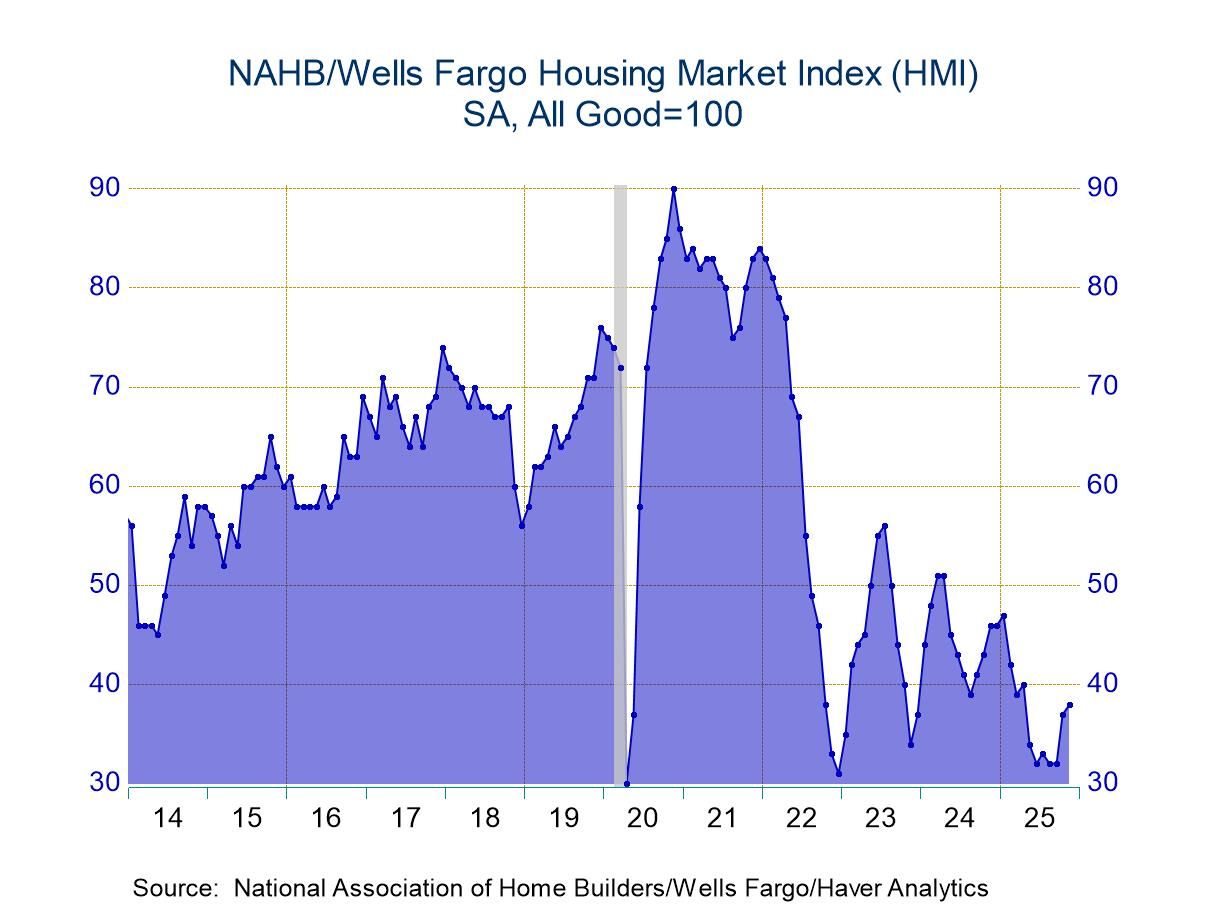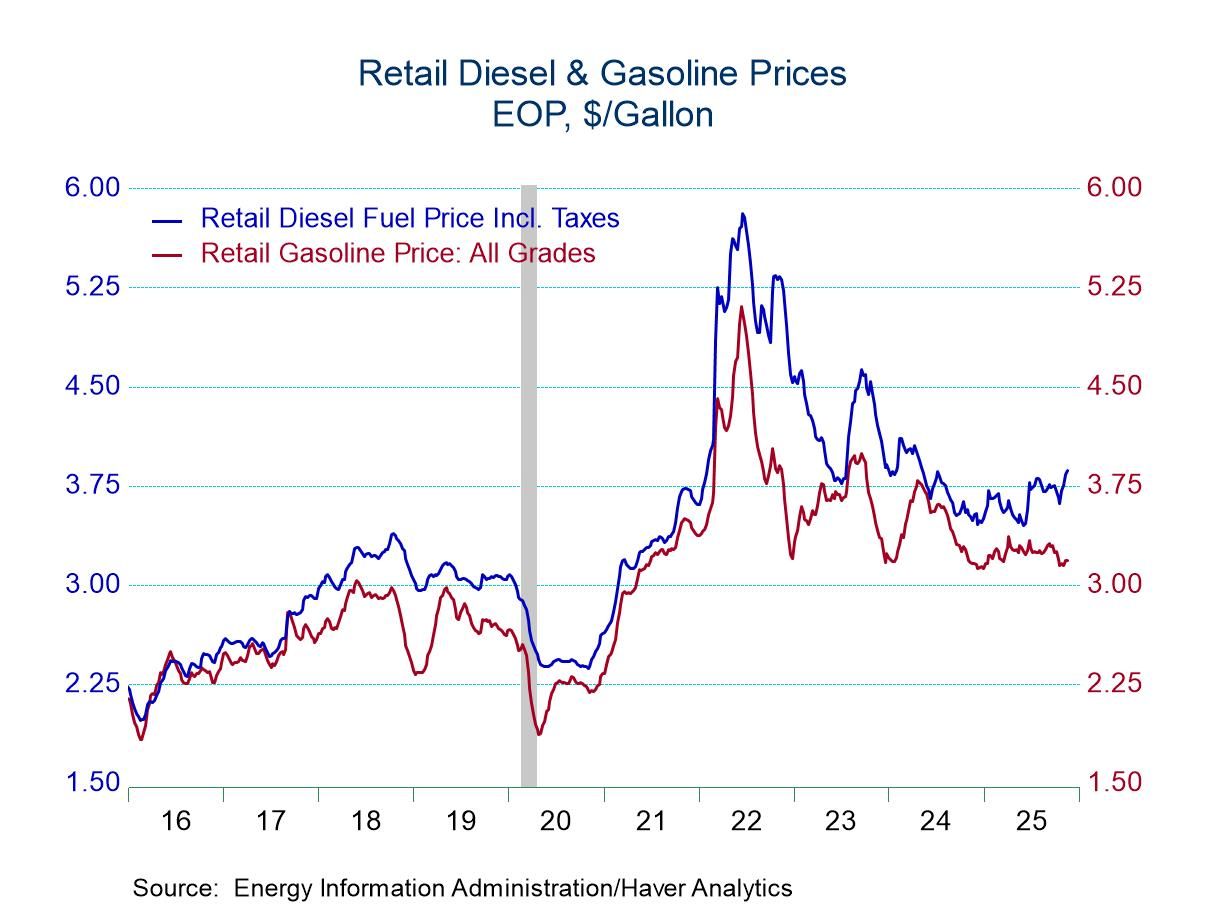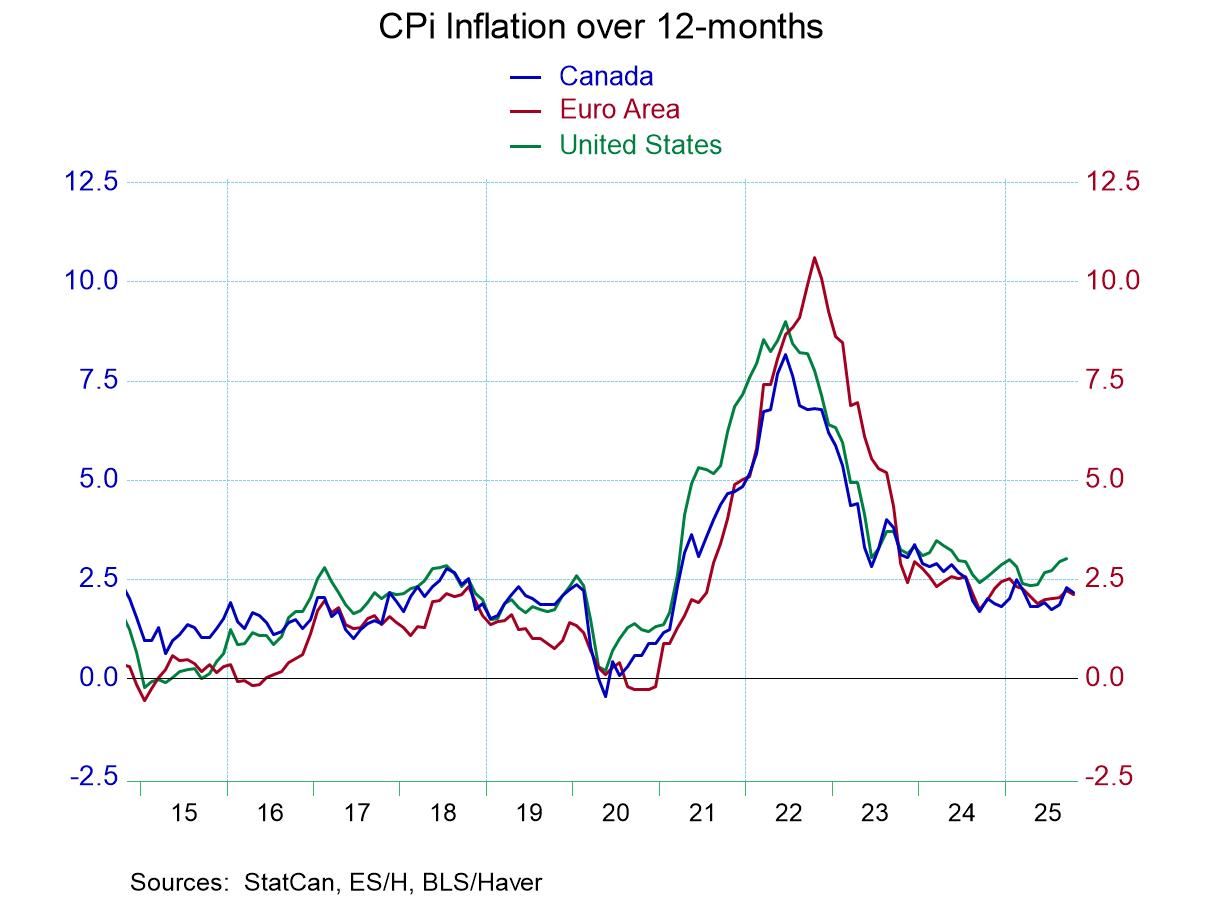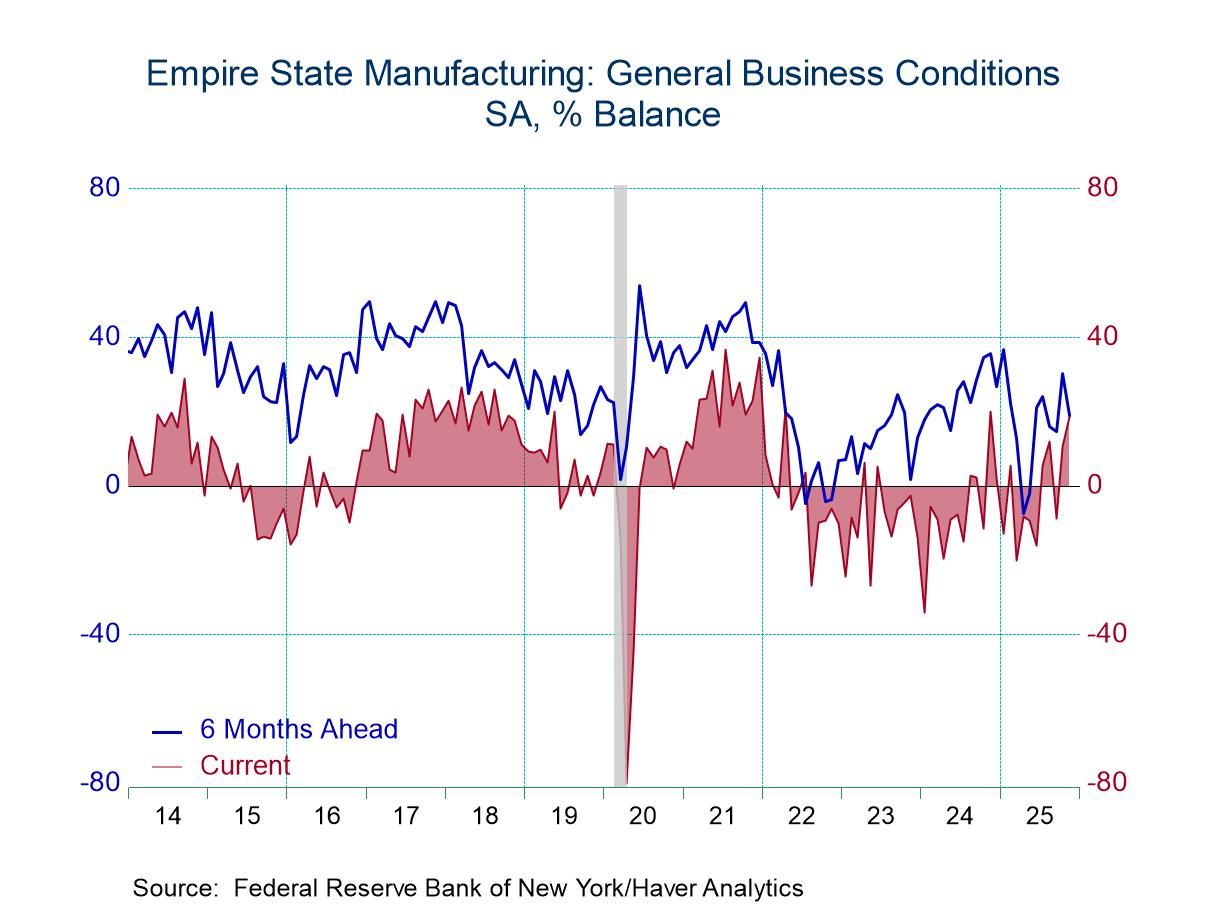U.S. Payroll Gain Slows in October as Jobless Rate Increases
by:Tom Moeller
|in:Economy in Brief
Summary
- Payroll employment increases, but household jobs fall.
- Monthly wage growth cools y/y.
- Unemployment rate gives back its September decline.


Nonfarm payrolls increased 261,000 (3.4% y/y) during October following gains of 315,000 and 292,000 in September & August, revised from 263,000 & 315,000. Payrolls rose 537,000 in July. Expectations had been for a 200,000 rise in the Action Economics Forecast Survey. On average, payrolls rose 289,000 during the last three months versus a three-month high of 602,000 in February of this year.
Average hourly earnings rose 0.4% last month after increasing 0.3% both in September & August. A 0.3% October rise had been expected. The 4.7% y/y earnings gain compared to an 8.0% y/y advance reached in April 2020.
The unemployment rate, measured in the household survey, rose to 3.7% last month and reversed its September decline to 3.5%. A 3.6% rate had been expected. Household employment declined 328,000 in October following a 204,000 rise in September. The labor force fell 22,000 after easing 57,000 in September. The overall unemployment rate, including workers who are marginally attached & working part-time for economic reasons rose to 6.8% from 6.7%.
In the establishment survey, the moderation in payroll job growth occurred as private sector employment rose 233,000 (3.8% y/y) after rising 319,000 in September. The increase reflected a 32,000 (3.5% y/y) gain in factory sector jobs which came after a 23,000 rise, and a 1,000 increase (3.3% y/y) in construction sector employment, following a 22,000 September improvement. Mining & logging employment held steady (9.4% y/y) after a 3,000 increase.
Private service-producing sector employment increased 200,000 in October (3.8% y/y) after improving 271,000 in September. Increases varied greatly amongst service sector categories. Education & health care jobs rose 79,000 (3.8% y/y) after four straight months of even stronger gains. Professional & business services employment increased 39,000 (3.8% y/y) after rising 52,000 in September. Within that category, the number of temporary help jobs rose 11,800 (3.0% y/y). Leisure & hospitality employment gained 35,000 in October (7.4% y/y) following a 107,000 strengthening. Employment in trade, transportation & utilities rose 31,000 (2.7% y/y) as retail employment increased 7,200 (1.6% y/y). Information sector employment rose 4,000 (5.4% y/y) after increasing 7,000 in September. Financial sector employment rose 3,000 (1.7% y/y) after edging 1,000 higher.
Government sector payrolls rose 28,000 last month (1.1% y/y) after declining 4,000 in September. Local government jobs increased 29,000 (1.6% y/y) after falling 7,000 in September. Federal government payrolls improved 6,000 (-0.1% y/y) last month and doubled the September increase. State government employment fell 7,000 (+0.6% y/y) after holding steady in September.
Private-sector average hourly earnings rose 0.4% in October. Earnings in the goods-producing sector rose 0.4% as they did in September. The 4.4% y/y rise remained below the 5.2% y/y March high. Earnings in construction rose 5.6% y/y followed by a 3.6% y/y gain in the factory sector which was below its 5.2% January peak. In the private services-producing sectors, earnings rose 0.4% (4.8% y/y) following two 0.3% increases. The 6.5% y/y rise in leisure & hospitality earnings remained below the 13.3% December peak, and professional & business sector earnings increased 5.0% y/y, down from 7.0% in March. Information service sector earnings rose 6.4% y/y, up from stability y/y last fall. The gain in financial activities earnings weakened to 3.8% y/y and remained below the 7.8% March 2021 peak.


The length of the average workweek stood at 34.5 hours in September for the fifth straight month. These readings remained below the 35.0 hour high reached in January of last year. The workweek in the goods-producing sector edged up to 40.0 hours from 39.9 hours but has been trending sideways since late-2020. The construction sector average workweek rose to 38.9 hours and the factory sector workweek edged higher to 40.4 hours. The average workweek in the private service-producing sector held at 33.5 hours but it remained below the 33.9 hour high in early-2021. The aggregate weekly hours index, a key indicator of production and income, rose 0.2% m/m in October but the 3.1% y/y rise remained below last year's 5.5% increase.
The household survey indicated a rise in the jobless rate to 3.7% as the size of the labor pool dropped for a second month after jumping in August. The labor force participation rate fell to 62.2% last month from 62.3% in September. It remained below the high of 63.4% early in 2020. The rate for teenagers held m/m at 36.7%. For workers aged 20-24, the rate edged up to 70.8 % but remained below a 72.0% December, 2021 high. For workers aged 25-54, the rate eased to 82.5% but remained close to the highest rate since before its collapse in the 2020 recession. For individuals 55 and over, the rate increased to 38.9%, a five-month high.
The employment/population ratio for all workers in October eased m/m to 60.0%, but remained significantly above the 58.9% level twelve months earlier. It remained below its reading of 61.2% in February, 2020 just prior to the pandemic.
The average duration of unemployment rose in October to 20.8 weeks and remained below a 31.6 week high in June of last year. The median duration of unemployment slipped to 8.1 weeks, a six-month low and stood below its 19.6 high in June 2021. The ranks of those individuals unemployed for 27 weeks or more rose sharply by 9.2% m/m, but remained down 50.2% y/y.
The employment and earnings data are collected from surveys taken each month during the week containing the 12th day of the month. The labor market data are contained in Haver's USECON database. Detailed figures are in the EMPL and LABOR databases. The expectations figures are in the AS1REPNA database.


Tom Moeller
AuthorMore in Author Profile »Prior to joining Haver Analytics in 2000, Mr. Moeller worked as the Economist at Chancellor Capital Management from 1985 to 1999. There, he developed comprehensive economic forecasts and interpreted economic data for equity and fixed income portfolio managers. Also at Chancellor, Mr. Moeller worked as an equity analyst and was responsible for researching and rating companies in the economically sensitive automobile and housing industries for investment in Chancellor’s equity portfolio. Prior to joining Chancellor, Mr. Moeller was an Economist at Citibank from 1979 to 1984. He also analyzed pricing behavior in the metals industry for the Council on Wage and Price Stability in Washington, D.C. In 1999, Mr. Moeller received the award for most accurate forecast from the Forecasters' Club of New York. From 1990 to 1992 he was President of the New York Association for Business Economists. Mr. Moeller earned an M.B.A. in Finance from Fordham University, where he graduated in 1987. He holds a Bachelor of Arts in Economics from George Washington University.






